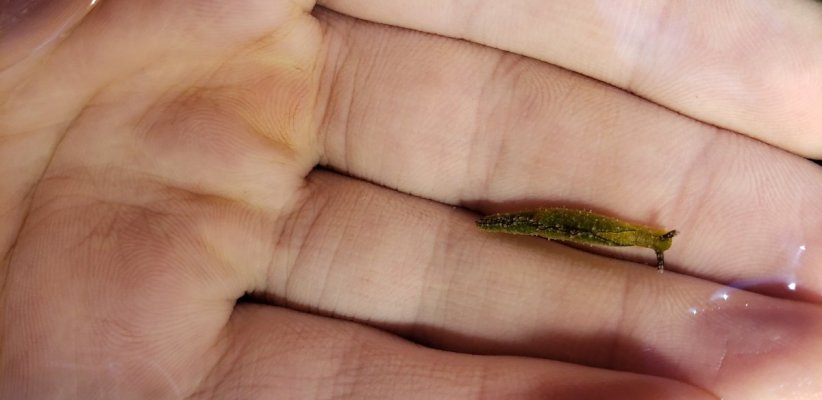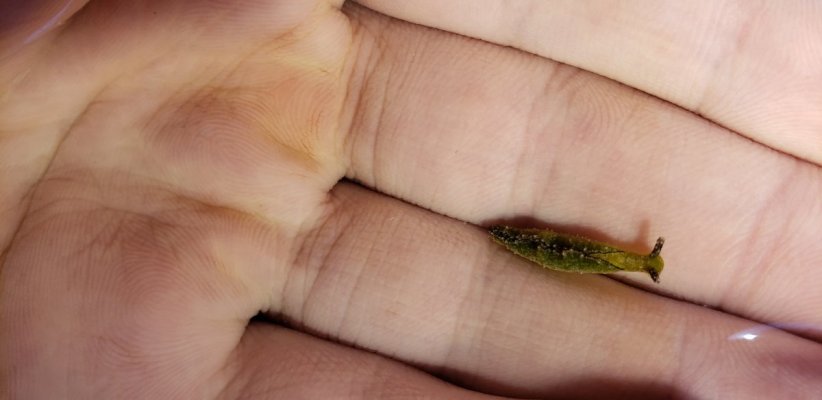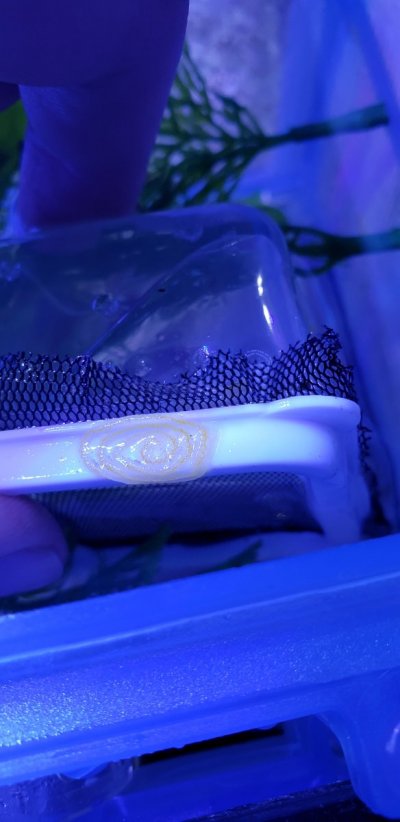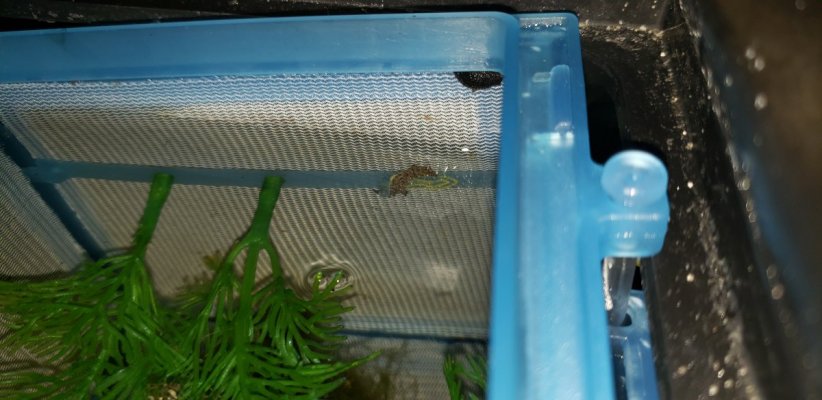This species is so identical to Elysia Pratensis in every way other than form that at this point I'm not even certain that it is a different species. If any Microscopists or Biologists are able to identify if this is the case I can provide living samples for analysis.
For Posterity and picture documentation I will provide my findings, however a large portion will simply be an edited version of the E. Pratensis study.
Locomotion: Like many snails and slugs the Elysia Subornata moves with a singular foot. Unlike other Elysia this species maintains and extremely solid connection and has no issues moving to and around high flow zones. I suspect they use their foot to form suction cups on hard surfaces like snails. Like Elysia Crispata these little guys will often travel along the surface of stiller waters but don't do it frequently. The reason why they do this escapes me entirely considering their diet tends not to float. The slugs will get anywhere they want, no commercial mesh will stop them from going in to overflows without restricting flow dangerously in most consumer systems.
Diet: The Elysia Subornata appears to only identify Caulerpa as food, all species of Caulerpa have been sufficient for reproduction, however the Subornata seems to prefer Caulerpa Verticallata . Like Crispata they are suctorial feeders and will suck out the cells to ingest them, I do not believe many of the chloroplasts are integrated in to the parapodia for photosynthesis. My reasoning for this is the short and flat parapodia and avoidance of direct light. Unlike Pratensis the Subornata MAY eat a native species of "turf" algae. I lack the ability to identify the algae so I will consider this as purely speculative and backed by no hard data.
Breeding: They will spawn in a wide range of conditions. The conditions I have observed are :
Temp: 70-95
Salinity: 1.025-1.050
Light Cycle: Unimportant to life cycle other than food availability
It should be noted that Subornata and Pratensis eggs are nearly identical and having them in the same systems makes difficult to make a determination.
The eggs appear yellow/gold with a light green hue and a unique folding pattern. Pictures will be provided below
Lifespan: Data Pending however I suspect around 8 months to 1 year maximum. Upon death the corpse will render in to a detritus and can be safely consumed by other inverts. The species seems to have a foul taste to some fish but no toxins or bacterial contamination concerns. This species may be capable of severing and ejecting its head but I have yet to observe this behavior under a multitude of scenarios.
Viability in a mixed reef: Excellent! This species can really hand a wide range of conditions and parameter swings. It will eat caulerpa but without large numbers the process is very slow and has little to no impact. It may be predated by hermits and other crabs and curious fish however chances are low when given caulerpa to hide on.
This concludes the more formal portion of this study. The following notes are unconfirmed behaviors, speculations and unformatted notes/thoughts and should be treated as such:
Different to Pratensis this species seems to be slightly more social, often forming small huddles to exchange semen and feed.
I'd like to say Subornata can handle more physical damage simply due to the invertebrates, breeding specimens have been exposed to.
Sometimes I suspect Oxynoidae and Sarcoglossa overlap more than what's currently observed, they seem to share so many traits and behaviors.
I also often see this species interacting directly with Pratensis including moving and feeding together.
For Posterity and picture documentation I will provide my findings, however a large portion will simply be an edited version of the E. Pratensis study.
Locomotion: Like many snails and slugs the Elysia Subornata moves with a singular foot. Unlike other Elysia this species maintains and extremely solid connection and has no issues moving to and around high flow zones. I suspect they use their foot to form suction cups on hard surfaces like snails. Like Elysia Crispata these little guys will often travel along the surface of stiller waters but don't do it frequently. The reason why they do this escapes me entirely considering their diet tends not to float. The slugs will get anywhere they want, no commercial mesh will stop them from going in to overflows without restricting flow dangerously in most consumer systems.
Diet: The Elysia Subornata appears to only identify Caulerpa as food, all species of Caulerpa have been sufficient for reproduction, however the Subornata seems to prefer Caulerpa Verticallata . Like Crispata they are suctorial feeders and will suck out the cells to ingest them, I do not believe many of the chloroplasts are integrated in to the parapodia for photosynthesis. My reasoning for this is the short and flat parapodia and avoidance of direct light. Unlike Pratensis the Subornata MAY eat a native species of "turf" algae. I lack the ability to identify the algae so I will consider this as purely speculative and backed by no hard data.
Breeding: They will spawn in a wide range of conditions. The conditions I have observed are :
Temp: 70-95
Salinity: 1.025-1.050
Light Cycle: Unimportant to life cycle other than food availability
It should be noted that Subornata and Pratensis eggs are nearly identical and having them in the same systems makes difficult to make a determination.
The eggs appear yellow/gold with a light green hue and a unique folding pattern. Pictures will be provided below
Lifespan: Data Pending however I suspect around 8 months to 1 year maximum. Upon death the corpse will render in to a detritus and can be safely consumed by other inverts. The species seems to have a foul taste to some fish but no toxins or bacterial contamination concerns. This species may be capable of severing and ejecting its head but I have yet to observe this behavior under a multitude of scenarios.
Viability in a mixed reef: Excellent! This species can really hand a wide range of conditions and parameter swings. It will eat caulerpa but without large numbers the process is very slow and has little to no impact. It may be predated by hermits and other crabs and curious fish however chances are low when given caulerpa to hide on.
This concludes the more formal portion of this study. The following notes are unconfirmed behaviors, speculations and unformatted notes/thoughts and should be treated as such:
Different to Pratensis this species seems to be slightly more social, often forming small huddles to exchange semen and feed.
I'd like to say Subornata can handle more physical damage simply due to the invertebrates, breeding specimens have been exposed to.
Sometimes I suspect Oxynoidae and Sarcoglossa overlap more than what's currently observed, they seem to share so many traits and behaviors.
I also often see this species interacting directly with Pratensis including moving and feeding together.
















